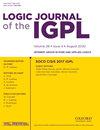利用 LSTM、双向 LSTM 和 GRU 网络对 El Mar Menor(西班牙)进行叶绿素-α 预报
IF 0.8
4区 数学
Q2 LOGIC
引用次数: 0
摘要
这项研究的目的是为西班牙梅诺尔湾(El Mar Menor)不同深度的叶绿素-α浓度建立精确的预测模型。叶绿素-α在评估这一脆弱生态系统的富营养化方面起着至关重要的作用。为实现这一目标,我们采用了多种深度学习预测技术,包括长短期记忆、双向长短期记忆和门控递归单网络。这些模型旨在预测叶绿素-α水平,预测期限为两周。为了提高模型的准确性,这些技术还采用了滑动窗口法与时间序列阻塞交叉验证程序相结合的方法。该方法还测试了两种输入策略:仅使用叶绿素-α 时间序列和结合外生变量。无论采用哪种预测技术,所提出的方法都极大地提高了预测模型的准确性。结果非常显著,0.5 米水深水平的 $overline{sigma}$ 值约为 0.90,更深水深水平的 $overline{sigma}$ 值约为 0.80。所提出的预测模型和方法在预测富营养化事件和作为环境机构的决策工具方面具有巨大潜力。通过这些模型对富营养化事件进行准确预测,可以采取积极主动的措施,从而改善环境管理和保护生态系统。本文章由计算机程序翻译,如有差异,请以英文原文为准。
Chlorophyll-α forecasting using LSTM, bidirectional LSTM and GRU networks in El Mar Menor (Spain)
The objective of this research is to develop accurate forecasting models for chlorophyll-α concentrations at various depths in El Mar Menor, Spain. Chlorophyll-α plays a crucial role in assessing eutrophication in this vulnerable ecosystem. To achieve this objective, various deep learning forecasting techniques, including long short-term memory, bidirectional long short-term memory and gated recurrent uni networks, were utilized. The models were designed to forecast the chlorophyll-α levels with a 2-week prediction horizon. To enhance the models’ accuracy, a sliding window method combined with a blocked cross-validation procedure for time series was also applied to these techniques. Two input strategies were also tested in this approach: using only chlorophyll-α time series and incorporating exogenous variables. The proposed approach significantly improved the accuracy of the predictive models, no matter the forecasting technique employed. Results were remarkable, with $\overline{\sigma}$ values reaching approximately 0.90 for the 0.5-m depth level and 0.80 for deeper levels. The proposed forecasting models and methodologies have great potential for predicting eutrophication episodes and acting as decision-making tools for environmental agencies. Accurate prediction of eutrophication episodes through these models could allow for proactive measures to be implemented, resulting in improved environmental management and the preservation of the ecosystem.
求助全文
通过发布文献求助,成功后即可免费获取论文全文。
去求助
来源期刊
CiteScore
2.60
自引率
10.00%
发文量
76
审稿时长
6-12 weeks
期刊介绍:
Logic Journal of the IGPL publishes papers in all areas of pure and applied logic, including pure logical systems, proof theory, model theory, recursion theory, type theory, nonclassical logics, nonmonotonic logic, numerical and uncertainty reasoning, logic and AI, foundations of logic programming, logic and computation, logic and language, and logic engineering.
Logic Journal of the IGPL is published under licence from Professor Dov Gabbay as owner of the journal.

 求助内容:
求助内容: 应助结果提醒方式:
应助结果提醒方式:


